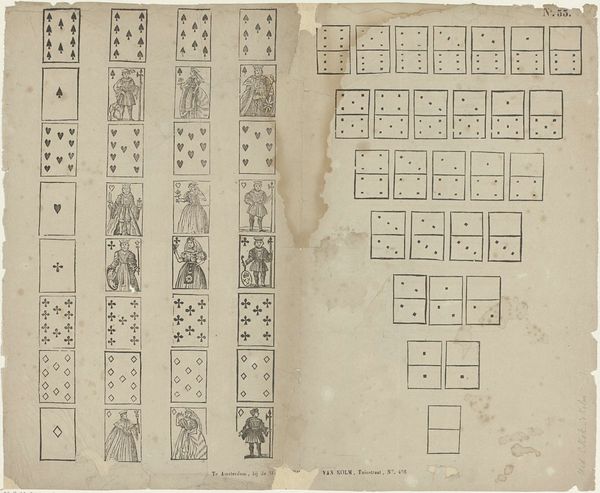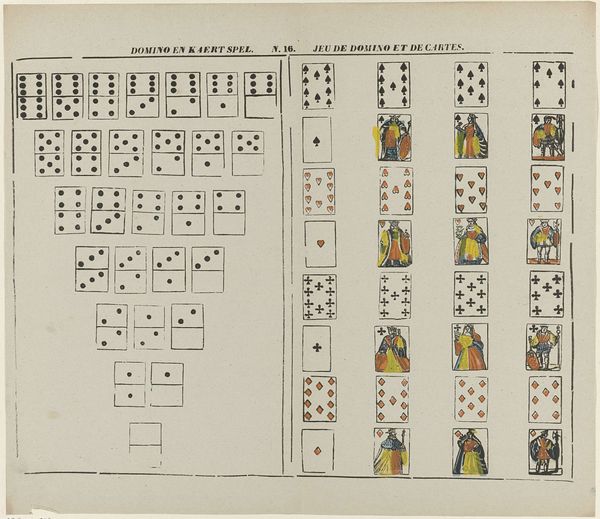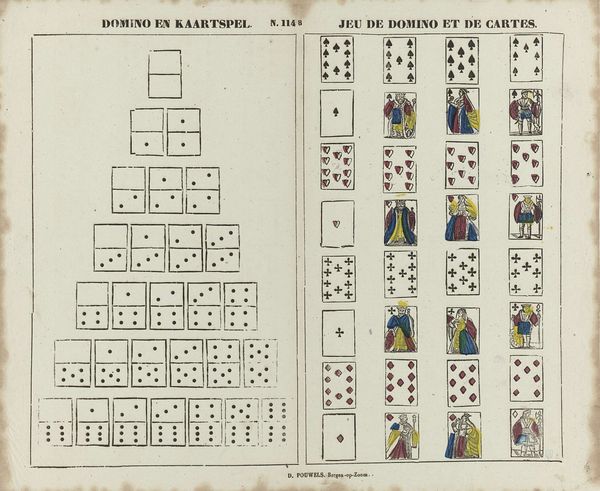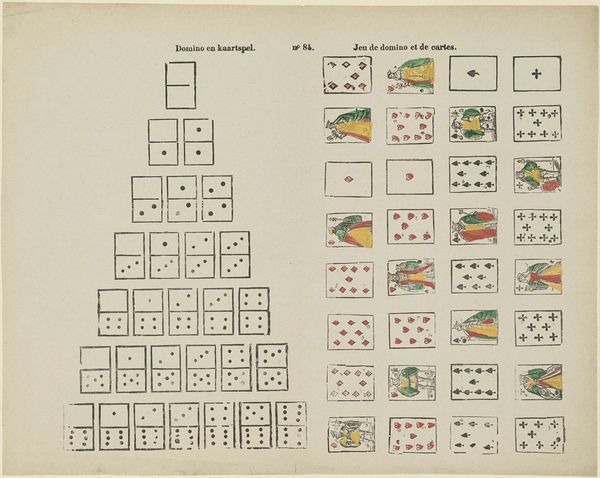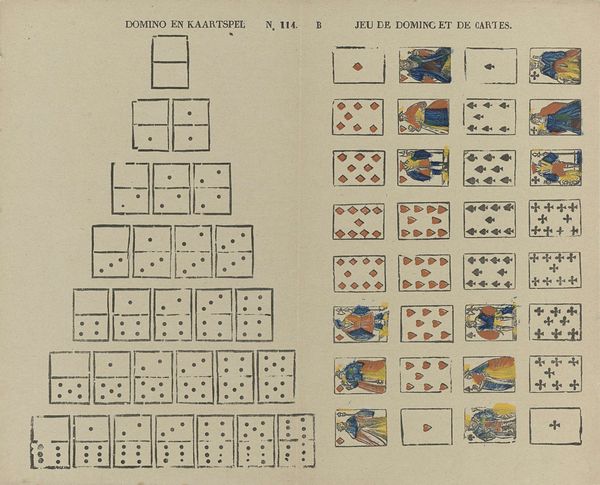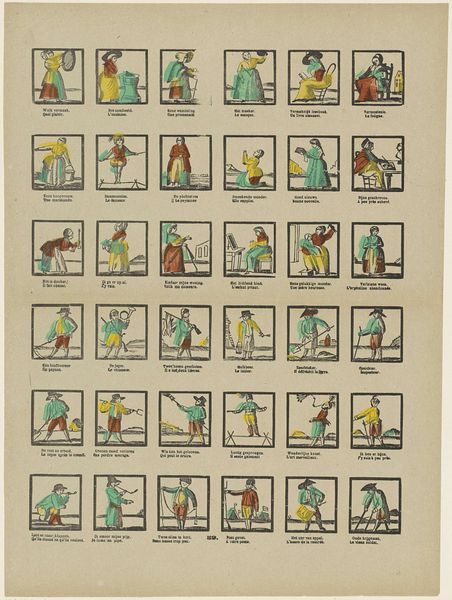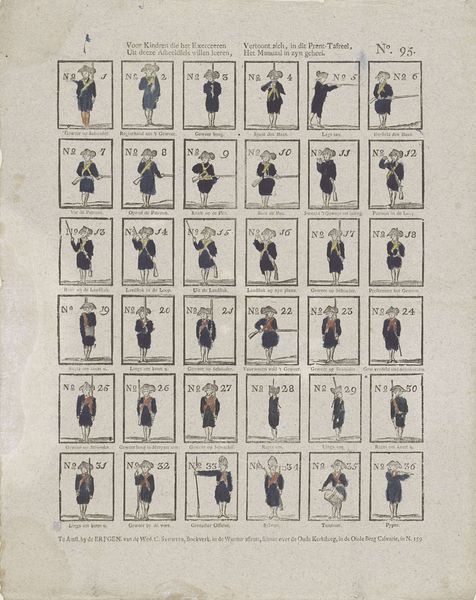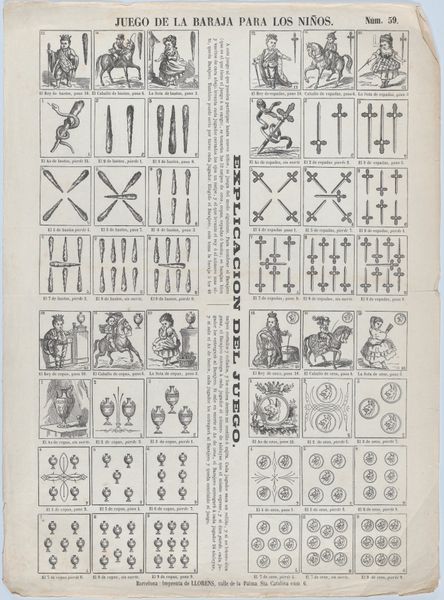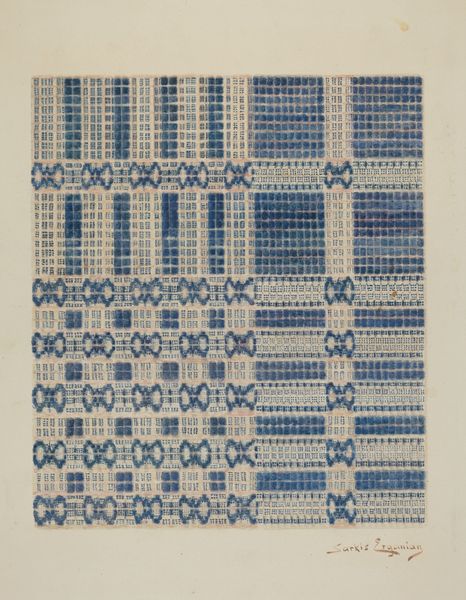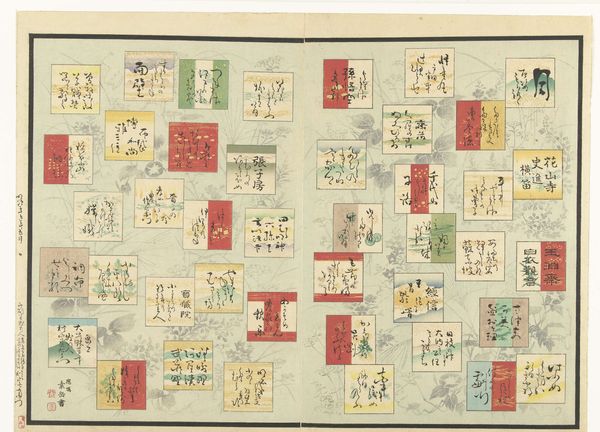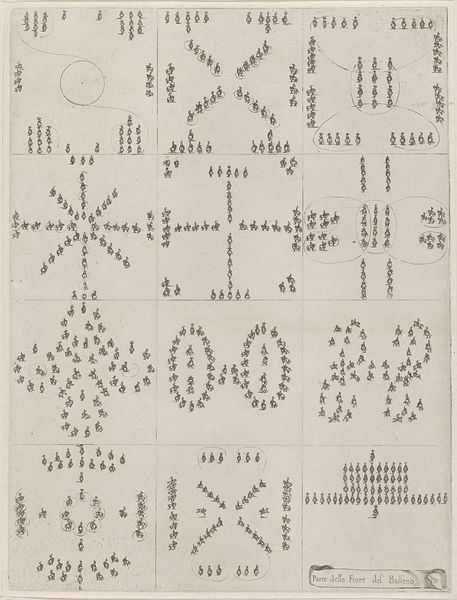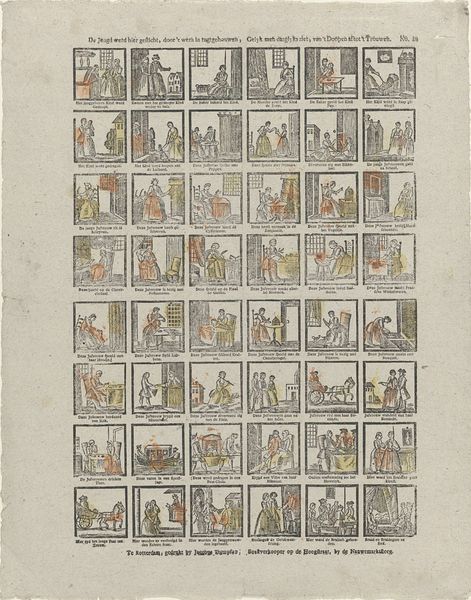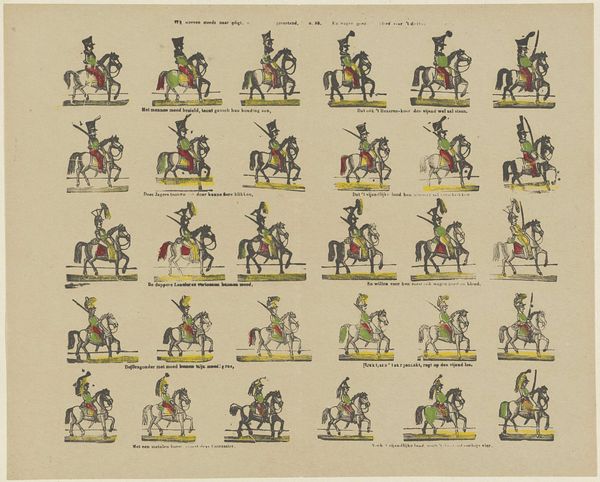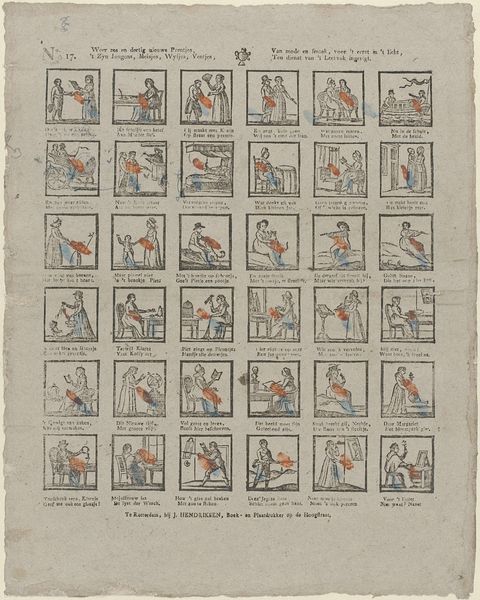
drawing, graphic-art, print
#
drawing
#
graphic-art
# print
#
monochrome
Dimensions: height 312 mm, width 388 mm
Copyright: Rijks Museum: Open Domain
Editor: This print, titled "Domino en kaartespel" from between 1848 and 1881 by Lutkie & Cranenburg, features both dominoes and playing cards in a single sheet. It’s a monochrome image, yet some of the cards seem to have hand-painted details. It strikes me as a very utilitarian, almost instructional piece. What do you make of it? Curator: I see this work as deeply embedded in the material conditions of its production and intended use. This isn’t about high art; it’s a printed sheet, likely mass-produced, perhaps bound into a book. Notice the economy of means: black ink, simple registration, minimal embellishment. The hand-coloring, rather than detracting from its value, speaks to the labor involved even in seemingly 'cheap' reproduction. Editor: So you're focusing on how it was made, not necessarily what it depicts? Curator: Exactly. The choice of dominoes and playing cards isn’t arbitrary either. These were burgeoning leisure activities for a growing middle class. The sheet provided standardized forms, a reproducible structure for social interaction. Who made the paper? Who cut the blocks? Who bought and used this print, and what social relationships did it facilitate? That’s where the real interest lies. It begs the question: is this really just an example of "graphic art" or perhaps, instead, a popular culture object that participates more broadly in material culture? Editor: That's a different way of approaching it than I had expected. It makes me think about the workshops that would have been involved, and the distribution networks. Curator: Precisely. Focusing on the material production moves us away from solely aesthetic interpretations to considerations of labor, class, and consumption. It asks us to consider the social and economic conditions within which these objects circulated and were used. Editor: I hadn't really thought about a print like this in terms of its wider social and economic context before, but I see how that changes the way we understand it. Thanks for offering that different point of view. Curator: It’s crucial to consider the conditions of production. It opens up so many new lines of inquiry.
Comments
No comments
Be the first to comment and join the conversation on the ultimate creative platform.
